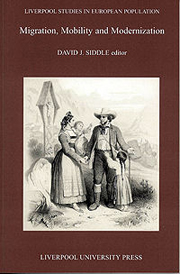Crossref Citations
This Book has been
cited by the following publications. This list is generated based on data provided by Crossref.
Lyngdoh, Tanica
Kinra, Sanjay
Shlomo, Yoav Ben
Reddy, Srinath
Prabhakaran, Dorairaj
Smith, George Davey
and
Ebrahim, Shah
2006.
Sib-recruitment for studying migration and its impact on obesity and diabetes.
Emerging Themes in Epidemiology,
Vol. 3,
Issue. 1,
Arar, Khalid
and
Haj-Yehia, Kussai
2010.
Emigration for Higher Education: The Case of Palestinians Living in Israel Studying in Jordan.
Higher Education Policy,
Vol. 23,
Issue. 3,
p.
358.
Arar, Khalid
2011.
‘Trapped between two worlds’ – Muslim Palestinian women from Israel in Jordanian universities: new identity and the price it demands.
Social Identities,
Vol. 17,
Issue. 5,
p.
625.
Arar, Khalid
Masry-Harzalla, Asmahan
and
Haj-Yehia, Kussai
2013.
Higher education for Palestinian Muslim female students in Israel and Jordan: migration and identity formation.
Cambridge Journal of Education,
Vol. 43,
Issue. 1,
p.
51.
Abo-Zaied Arar, Eman
and
Tannenbaum, Michal
2021.
Pride, shame, and guilt: socio-emotional aspects of the encounter between the Bedouin and Fellahi dialects.
International Journal of Bilingual Education and Bilingualism,
Vol. 24,
Issue. 8,
p.
1232.



